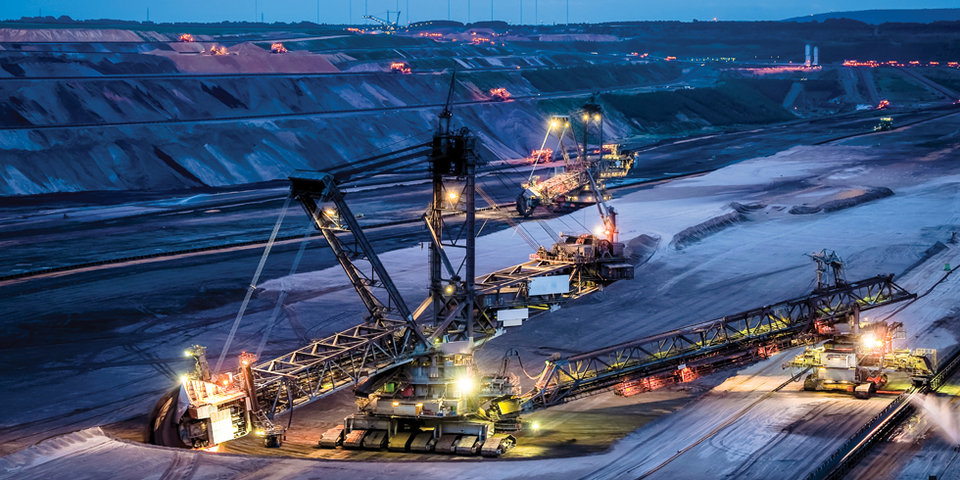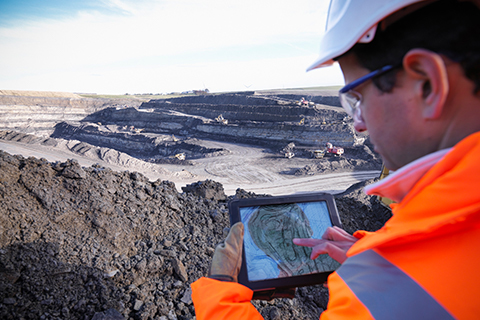
COMPANY INSIGHT
Sponsored by Schneider Electric
Mining — in the Edge of Change
It is estimated that there will be a 37% increase in mining revenue by 2030. But, it’s not all upwards trends, alongside of this revenue comes increased challenges. Mines must work now to become more agile and ready for the new technologies that will continue to transform the sector.
M
ining has long been a significant economic contributor to the Australian economy. In fact, it is estimated that there will be a 37% increase in mining revenue by 2030, generating $74 billion and around 80,000 job for Australia. But, it’s not all upwards trends. Alongside of this revenue comes increased challenges for mining companies, including pressure from shareholders to stay profitable. Factors such as additional environmental concerns, maintaining licenses to operate and keeping up with fluctuating markets mean profits are not as easy to come by as they once were.
To overcome these additional challenges, mining companies are looking for ways to reduce their overall expenditure and increase their efficiencies. The most effective way to do this is to bring in digital systems and technologies which enable them to better do business.

Autonomy in the mining industry
Autonomous vehicles and robotics are becoming more common in the Australian mining industry. The global mining automation market is forecast to grow in value by almost 50 per cent by 20231, with Australia and the Asia-Pacific (APAC) region leading the expansion. In terms of savings, the estimates are that by 2035, data analytics and robotics could produce between US$290 and US$390 billion in annual productivity savings for thermal coal, iron ore, copper, oil and natural gas producers across the globe.
The data leveraged from automation and digitisation is also significant, especially when such data is used to plan, optimise and integrate activity across a mining value chain. One example of this automation is the use of Autonomous Haul Trucks. Used in underground and open-pit mines, the trucks carry a variety of IT systems including image processing computers, LiDar laser surveying, radar equipment, sensors, and generic IT equipment such as routers and servers. Every minute the trucks are in use they are generating terabytes of data, which can then be collected and analysed for better productivity at the mine site overall. Edge computing technology makes this possible.
Edge computing in mining
Often located in remote areas, a typical mine site can operate more effectively by uploading information to a local prefabricated data centre than by trying to upload large amounts of data to a remote location, or to the cloud. Using an Edge solution means that latency issues are unlikely, and production is not forced to stop, or slow down, as a result. In the case of the Autonomous Haul Trucks, the trucks can upload their data feed to an onsite data centre for easy access. Then for longer-term storage, the information can be sent to a secondary onsite data centre, or to the cloud.
Informed decision making
Having this data available to operators means they can make decisions based on real information, collected direct from the mining site. This means they can be more proactive in maintenance procedures, as well as being more in tune with what is happening directly at the mine. This connectivity leads to more data driven insights and better operational productivity.
Safety
Safety is a matter of upmost importance at a mining site. Not only is injury or harm to a person a problem in itself, but a safety incident can cost the company millions of dollars in production slowdown.
With a shift in the workforce towards younger people who change roles more frequently, there is not as much opportunity for new workers to learn from their predecessors. Instead, knowledge and training must now be embedded in the machines and systems themselves. Similarly, technology such as augmented reality, can be used to simulate the work environment for training purposes. For both these safety measures to take place, a digital transformation has to take place.
The future of mining
There is no doubt the future of mining is digital. Mines must work now to become more agile and ready for the new technologies that will continue to transform the sector. With rapid advances in AI, automation and innovation, the mining sector can fully embrace the digital changes, and reap the rewards of greater productivity and efficiencies. In order to do this effectively, mining operations will need a full range of reliable, robust and secure IT solutions to keep everything connected. Technology such as servers, data centres, UPSs and cooling systems are all needed, as well as clever software to make sense of it all. Schneider Electric’s EcoStruxure SaaS solution, along with the AVEVA platforms, is one of the most complete end-to-end technology solutions in the market, enabling a scalable digital solution from pit to port for mining customers.
1. World Economic Forum, “Mining and Metals: digital transformation and the industry’s ‘new normal’”, January 2017
